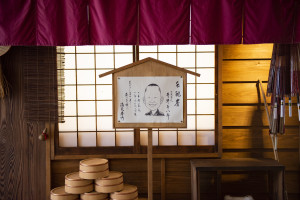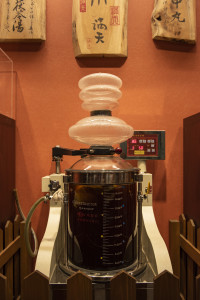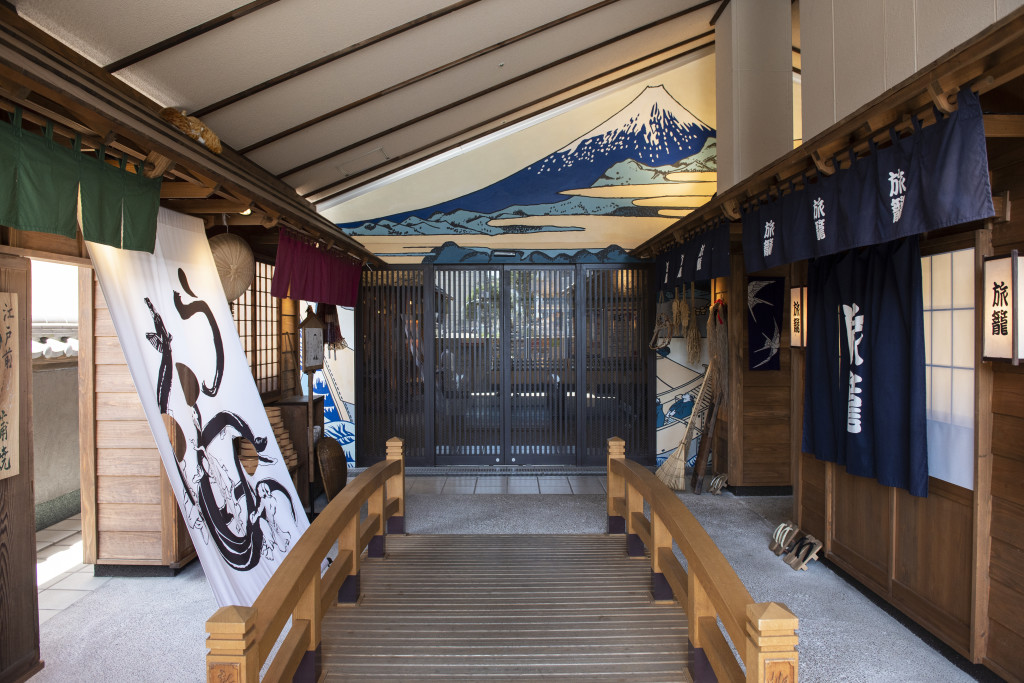 It will likely surprise many to learn that there is a spacious bathhouse facility located just beyond the exit of Kamihoshikawa Station. Manten no Yu provides a modern bathing experience with all the bells and whistles in an atmosphere that harkens back to the days of the samurai. The attractive entryway has been created in the semblance of an Edo era ukiyo-e (woodblock print) that depicts a wooden bridge leading into a village of wooden houses. Traditional Japanese scenery and items like a kago (palanquin) line the entrance. As you cross over the bridge you pass under another ukiyo-e of Mount Fuji. That artwork theme pervades much of the premises.
It will likely surprise many to learn that there is a spacious bathhouse facility located just beyond the exit of Kamihoshikawa Station. Manten no Yu provides a modern bathing experience with all the bells and whistles in an atmosphere that harkens back to the days of the samurai. The attractive entryway has been created in the semblance of an Edo era ukiyo-e (woodblock print) that depicts a wooden bridge leading into a village of wooden houses. Traditional Japanese scenery and items like a kago (palanquin) line the entrance. As you cross over the bridge you pass under another ukiyo-e of Mount Fuji. That artwork theme pervades much of the premises.
The bathing area also gives you the sense of stepping back in time to an Edo era bathhouse. You can try several different kinds of baths, some of which change with the seasons and even the day. Ready for a peppermint bath? How about jasmine, rose or juniper? The Chinese herbal bath may be the main attraction. Chinese herbs (which you can see and smell at the entrance) are boiled and added to the bath four times daily. There is also a Finnish-style tower sauna and a variety of relaxation courses to choose from. 
Not just a bathhouse, Manten no Yu is also ready to satisfy your hunger. The restaurant offers udon, soba, ramen, sushi, and various Japanese parfaits featuring things like matcha ice cream, azuki beans and mochi (sticky rice cake). There is also a long list of monthly events such as “Jazz and Rakugo Time” (rakugo is a traditional, comic form of storytelling), bingo contests and live music performances. The bathhouse truly caters to everyone from children to the elderly, groups and families to solitary guests.
Most information is in Japanese only, but signs concerning bathing rules have easy English and there is a guide to using the baths in English at the front entrance. Note that tattoos are not allowed.


